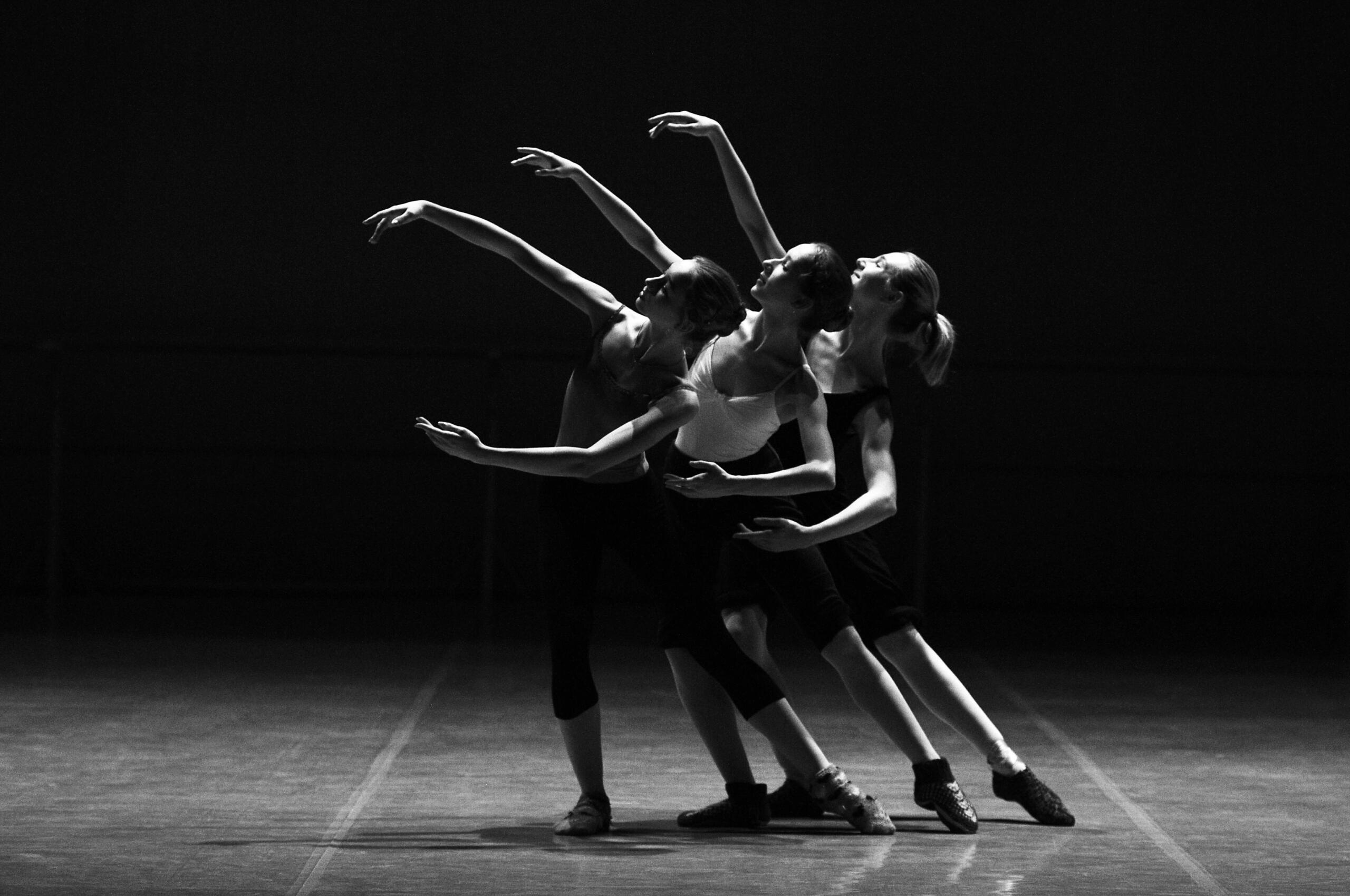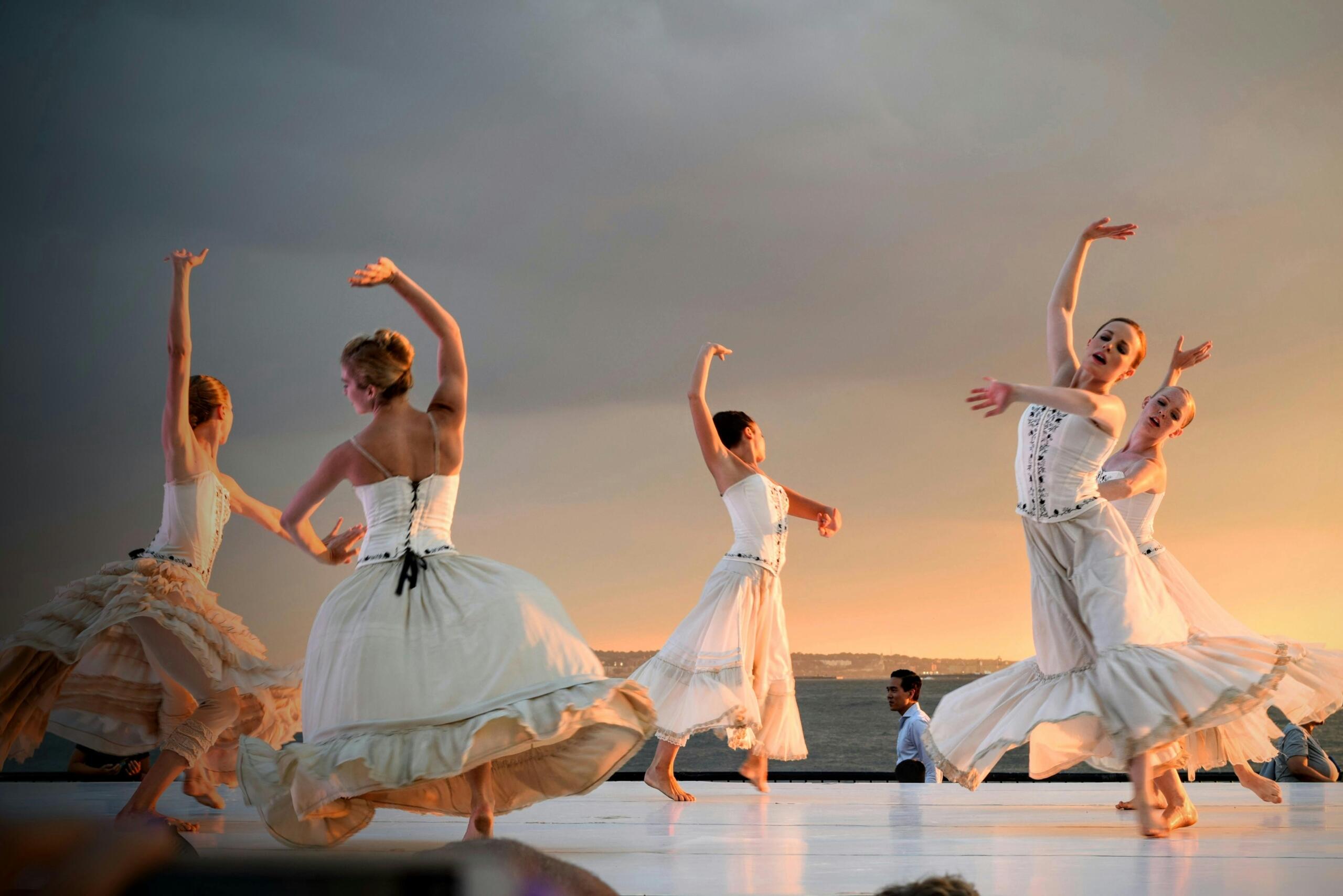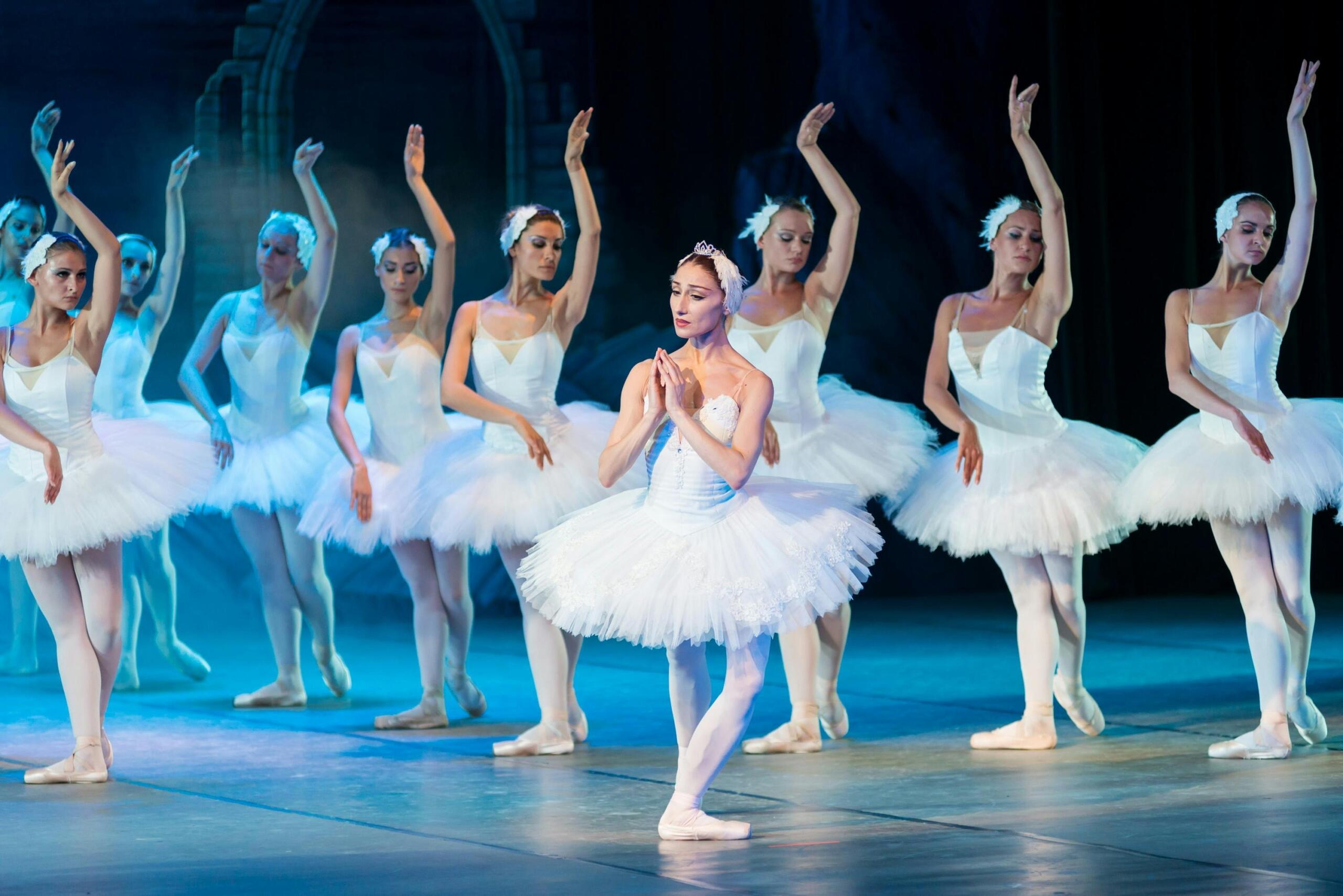Artists express themselves through their chosen medium—writers through words, actors through performance, and painters through brushstrokes. Ballet dancers, however, communicate through movement, using precise gestures and postures to tell a story. Originating in the Italian Renaissance as entertainment for elites, ballet has evolved into a demanding yet elegant art form. Many begin as hobbyists, only to develop a deep passion for their discipline. Unlike other dance forms, ballet requires intense physical, mental, and emotional dedication, blending athleticism with artistry. In this article, we're going to be refining our scope to the pros and cons of practicing the dance, so that you know exactly what to expect as you learn the dance. Let’s take a look at what the experience of being a ballet dancer in the USA is like.
| Advantages | Disadvantages |
|---|---|
| Increased Confidence: Mastering new techniques boosts self-esteem | Competitive & Demanding Nature: Exhaustive training pushing dancers to physical and mental limits |
| Physical & Emotional Strength: Enhances both body and mind through rigorous training | Body Shaming: Pressure to maintain idealized physical appearance leading to criticism |
| Lifestyle Improvement: Complements healthy lifestyle similar to gym exercises | Injury Risk: Common issues include blisters, sprained ankles, and stress fractures |
| Focus & Determination: Improves vigilance and fundamentally changes life attitude | Stress & Anxiety: Pursuit of perfection and high competition causing significant mental strain |
| Artistic Expression: Unique mode of expression where movement becomes language | Mental & Emotional Pressure: Continuous drive for perfection can be psychologically taxing |
| Muscle Building & Agility: Strengthens muscles and improves cardiovascular health | Short Career Span: Many careers are limited by the age and physical endurance of the dancer. |

What Is Ballet Dance?
Ballet comes from the Italian word “ballare,” which means “to dance.” It is a unique dance form wherein the ballerina uses their body, including arms, feet, toes, and body postures, to tell a story. It is performed theatrically with other artistic elements, such as music, costume, and stage scenery.

You will express a story using your body. This is also why this dance form is considered the epitome of grace, elegance, and flow. It is also a testament to your endurance since you have to maintain your physical and emotional strength during the performance. To this end, there are several delicate gestures you will have to master. Some basic movement vocabulary includes arabesques, pliés, and pirouettes.
The Advantages and Disadvantages of Ballet Dance
Ballet is doubtlessly a beautifully expressive and elegant dance performance. It shapes you as an artist and a dancer. Nevertheless, the strenuous nature of the art form compels you to get out of your comfort zone. Plus, like any other skill, this dance form also requires absolute commitment and dedication.
In other words, you need to sweat behind the stage to make it look appealing and glamorous during a live performance.
So, whether you are a beginner or looking to build your career with this art form, you first need to be aware of all its pros and cons. This would offer you a clear perspective to make an informed decision.

Advantages of Ballet
One of the biggest pull factors that brings hobbyists and professionals alike to learn dancing is the long list of advantages that arise from practising the dance. Dance is a transformative process that will help you in many facets of your life, even if you add just an hour or two of ballet into your weekly routine. Here are the main advantages of becoming a ballet dancer:
Physical & Emotional Strength
Ballet dance allows you to test and enhance your overall physical and emotional strength. As discussed above, this dance form incorporates several body parts and gestures, keeping the dancer physically active and emotionally in sync.
Although ballet is challenging and experimental, once a ballerina knows how to gain control over their bodies and minds, they can make it look flawless. Ballet also regulates your emotional well-being by keeping you conscious and open to adapting to new styles.
Developing Focus & Determination
Nothing is better than learning a new skill to beat laziness and lethargy, especially ballet. It keeps you on your toes.

While it mightn't be much more than a hobby to many of the people who practice the dance, it still develops focus and determination!
Ballet makes you vigilant and sensitive to your surroundings, boosting your competitive nature and driving your passion and focus.
Once you have learned this dance form, you will experience a change in your behavior and attitude towards life.
These are advantages that will translate into many endeavours. You'll find yourself approaching many other skills and daily tasks in a whole new light. You'll likely notice yourself being more present in each task you complete and even more consistent with practice in the long run.
Improve Your Lifestyle
Ballet enhances your overall living standards by making you focus on your diet and routine. Consequently, the physically demanding nature of ballet automatically improves your metabolism, too. This is because the dance moves of ballet resemble gym exercises, keeping your figure toned and in shape.
Boosts Confidence
Ballet builds and boosts your self-confidence. Studies have shown that learning new skills and mastering them instils a sense of accomplishment and pride. As you learn new techniques, your self-esteem will inevitably increase. Indeed, ballet gives you the confidence needed to tackle challenges open-heartedly with the intent to conquer them.
Great Form of Expression
Ballet is a blend of physical, emotional, and theoretical performance. It uses body movements to narrate a story. Utilizing context, characters, and costumes enables artistic expression through body language. Thereby helping you express your emotions to share stories with an audience.
Ballet expression relies on dancers conveying emotions and narratives through precise movements, body language, and facial expressions, rather than using words.
Builds Muscle & Agility
Ballet dance includes dance movements and postures that resemble gym exercises. For example, plies symbolize squatting, sautés give the impression of jumping, while pirouettes involve spinning.
All these strenuous movements involve continuous muscle activity that builds strength and agility. Moreover, ballet requires you to breathe with coordination throughout your dance sequence, increasing your cardiovascular strength.
Learning Grace & Elegance
It is the epitome of grace and elegance. And while a dancer has to go through a lot during training sessions, what is visible to spectators is an effortless performance on the stage. The fact is, a ballerina has to acquire balance and control over their body, mind, and emotions to achieve this. At the end of their training, a ballet dancer learns grace and elegance to make one of the most arduous dance forms look effortless and glamorous on stage and to elevate their career.
Cognitive and Emotional Growth
Ballet enhances cognitive skills like memory, coordination, and concentration. The discipline required fosters resilience, patience, and emotional expression, helping dancers develop strong problem-solving and adaptability skills.

Connecting & Syncing
Ballet demands synchronization and connection with your fellow ballerinas. Whether it’s a swarm ballet performance or a classical partner ballet performance, it requires coordination with everyone else who will be on stage with you. This subsequently helps you connect effectively and intimately, developing your interpersonal skills.
Career Versatility
While ballet is highly specialized, the skills gained—discipline, creativity, and physical endurance—can translate into various careers, such as choreography, dance instruction, fitness training, or even fields like theater and fashion.
In the US ballet industry, there are roughly 15,200 professional dancers, with a workforce of 16,449 dancers and choreographers, predominantly women (75.4%). The majority of dancers are employed by companies, and the industry has seen growth, though expenditure for US ballet organizations decreased since the pandemic.
Step into the enchanting world of ballet with our esteemed dance classes nyc, where the rhythm of the city meets the grace of movement. Whether you're a budding dancer eager to take your first plié or a seasoned performer looking to refine your technique, our expert instructors will guide you through a journey of artistic expression and physical mastery. Join our vibrant community of dancers and ignite your passion for ballet amidst the iconic backdrop of the Big Apple.
Disadvantages of Ballet
While the upsides of practising the dance certainly outweigh the downsides, there are a number of cons of ballet that you'll want to be aware of. Knowing about each will help you make a more informed decision as to whether or not it's the right move for you. It will also help you know what to expect or what to look out for as you progress in your learning. Here are some of the disadvantages of becoming a ballet dancer:
Competitive & Challenging
Ballet is a highly competitive and challenging form of dance. Therefore, it demands the utmost commitment, dedication, and passion to begin your ballet career and achieve the title of a professional ballerina.
Nevertheless, the challenging nature of ballet can take a toll on your mental, emotional and physical health. It leads to tiring, muscle tensing, and stressful training sessions. And until or unless you are not fully committed and prepared, it is recommended to avoid performing such challenging dance forms.
Short Career Span
Unlike many other professions, a ballet dancer’s career is often limited by age and physical endurance. Most professional dancers retire in their 30s or 40s due to the intense physical demands.
High Risk of Injury
At times ballet is no less than performing stunts. As a result, it takes a toll on your physical health. Consequently, while going through long training sessions, a ballerina is at a high risk of physical injuries. Your legs would be particularly vulnerable.
Some unfortunate dancing injuries to the feet include blisters and calluses, ingrown toenails, sprained ankles, Metatarsalgia, Plantar fasciitis, Bunions, Hallux rigidus, and stress fractures.
Body Shaming
A ballet dancer is a performer in the limelight. Therefore, criticism is as expected as applause. In fact, many ballet dancers have been criticized and judged in the past because of their body types.
To perform ballet, one has to be physically fit and in shape. Unfortunately, if you are a ballerina with a different body type that doesn’t fit in the so-called idealized frame of a ballet dancer, expect some harsh comments and body shaming your way.
Stress & Anxiety
Many people start learning this extraordinary dance genre, but they give up halfway through the journey. Ballet dancers experience high stress and anxiety during training sessions and performances. It is a physically and emotionally challenging form of dance, and to master it, you have to be committed.
Mental and Emotional Pressure
The pursuit of perfection in ballet can lead to immense psychological stress. Dancers often face high expectations, body image concerns, and the pressure to maintain peak performance, which can impact mental well-being.
Alas, the benefits of being a dancer demonstrably outweigh the cons.
Learn Ballet with Experts from Superprof!
Nonetheless, ballet is a dance form that can be highly rewarding for those pursuing it professionally. It boosts one’s self-confidence when one receives praise, and the pay is relatively high. If you want to commence your ballet journey, enroll in Superprof’s online dance lessons. With their help, you can become a ballerina from the comfort of your home!
Unleash your inner rhythm and spice up your dance journey! Join our invigorating private hip hop dance lessons, a perfect complement to your regular ballet classes. Infuse your movement with the dynamic beats of hip-hop while creating a unique and eclectic dance experience that harmonizes tradition with contemporary style.
















If you really want to be a ballet dancer you should begin art form.You will be advised the best foods etc it is adviseable to attend the best ballet school .thr school in st Petersburg Russia is one of the best there is also the Paris opera other European schools are also good there you will be molded into a special dancer
You